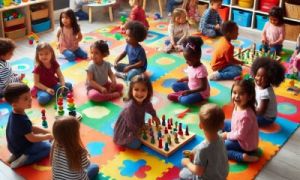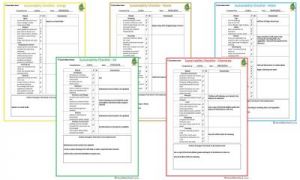Gathering children's voices for a program is all about ensuring that their ideas, opinions, and creativity shape the activities and experiences they participate in. The following article provides information on How Does Gathering Children's Voices Enhance Their Learning?, What Are Practical Ways To Gather Children's Voices? What Are Tips For Engaging Children In Discussions? Example Plans For Gathering Children's Voice and more.
How Does Gathering Children's Voices Enhance Their Learning?
When children are encouraged to express their thoughts, ideas, and preferences, it transforms their learning experience in powerful ways! Here’s how gathering children's voices enhances their development:
1. Builds Confidence & Ownership
When kids feel their opinions matter, they gain confidence in their abilities and take ownership of their learning. They become active participants rather than passive learners.
2. Encourages Critical Thinking
By asking children what they think, they begin to reflect, analyze, and make choices. This strengthens their problem-solving and decision-making skills—essential for lifelong learning.
3. Fosters Creativity & Innovation
Allowing children to voice ideas leads to new and inventive ways of learning. They might suggest unique projects or fresh perspectives that educators wouldn’t have considered.
4. Strengthens Communication Skills
Giving children space to express themselves—whether through words, drawings, or actions—helps them develop communication skills and learn how to articulate their thoughts effectively.
5. Creates a Sense of Belonging
When children see their ideas being valued and implemented, they feel respected and included. This builds a positive learning environment where they are eager to participate.
6. Enhances Engagement & Motivation
Children are more likely to stay engaged in learning when they have a say in what they explore. When activities align with their interests, learning becomes exciting rather than something they feel forced to do.
7. Supports Emotional & Social Development
Expressing thoughts and emotions in a safe space teaches children how to understand their feelings and respect the viewpoints of others. It encourages collaboration and empathy.
What Are Practical Ways To Gather Children's Voices?
Gathering children's voices is about creating opportunities for them to express their thoughts, ideas, and preferences in meaningful ways. Here are some practical methods educators and caregivers can use:
1. Everyday Conversations
- Talk to children casually during play or meals.
- Ask open-ended questions like, “What was the best part of today?” or “What do you think we should do next?”
- Listen actively and show appreciation for their input.
2. Suggestion Board
- Set up a "Ideas Wall" or "Wish Box" where children can write or draw their suggestions.
- Regularly review and implement ideas they share.
3. Creative Expression Activities
- Let children express themselves through art, storytelling, music, or drama.
- Ask them to create posters or presentations about things they enjoy.
4. Group Discussions & Brainstorming
- Have “kids’ meetings” where they discuss activities and improvements.
- Encourage voting on upcoming projects or new ideas.
5. Journals & Reflection Time
- Provide personal or shared journals where children can write or draw their thoughts.
- Reflect on key themes together to make improvements.
6. Surveys & Questionnaires
- Create simple forms with questions like:
- “What do you love doing here?”
- “Is there anything you’d change?”
- “What new things would you like to try?”
7. Leadership & Ownership
- Establish a children’s council where they can help make decisions.
- Rotate roles like daily helpers, activity planners, or feedback leaders.
8. Observation & Documentation
- Keep a children’s voices notebook where educators record spontaneous ideas and conversations.
- Observe which activities draw enthusiasm and engagement.
9. Interactive Voting
- Use stickers or tokens to let children vote on activity choices.
- Display results publicly so they see their opinions shaping the program.
10. Digital Storytelling & Video Diaries
- Allow children to record short video messages expressing their thoughts.
- Create digital stories showcasing their ideas and preferences.
What Are Tips For Engaging Children In Discussions?
Engaging children in discussions requires creating a welcoming atmosphere where they feel comfortable expressing their thoughts. Here are some effective strategies to foster meaningful conversations:
1. Start with Open-Ended Questions
- Instead of asking yes/no questions, try prompts like:
- “What was the best part of your day?”
- “If you could change one thing about our activities, what would it be?”
- This encourages deeper thinking and storytelling.
2. Use Play & Creativity
- Let discussions happen naturally during play, storytelling, or art activities.
- Some children communicate better through drawing or imaginative play.
- Role-playing games can make conversations more engaging.
3. Create a Safe & Supportive Environment
- Make sure children know that every idea matters and there are no wrong answers.
- Use active listening—nod, make eye contact, and repeat back ideas to show understanding.
- Praise participation, even if their answers are brief.
4. Keep It Fun & Interactive
- Introduce activities like:
- Idea Jars—Kids pull a question from a jar and share their thoughts.
- Voting with Stickers—Children place stickers on their favorite ideas or options.
- Think-Pair-Share—Kids discuss in pairs before sharing with the group.
5. Follow Their Interests
- Ask about topics that excite them, whether it’s dinosaurs, superheroes, or space.
- Incorporate their passions into discussions—if a child loves animals, ask them what kind of zoo they’d create.
6. Let Children Lead
- Give them the chance to ask questions and guide the conversation.
- Encourage them to come up with ideas for activities or changes in their environment.
- Assign rotating roles like discussion leader or idea collector to empower them.
7. Keep It Short & Engaging
- Young children may not focus for long, so keep discussions brief and dynamic.
- Use visuals, props, or movement to keep them engaged.
Example Plans For Gathering Children's Voice
Toddlers
Creating engaging discussion plans for toddlers requires simplicity, interaction, and playfulness! Here’s a structured plan to help encourage conversation and expression:
1. Welcome & Warm-Up
- Start with greetings: “Hello, friends! How are we feeling today?”
- Sing a hello song or do a simple movement activity to engage them.
2. Sensory Play Discussion
- Introduce an item like a soft toy, textured ball, or colorful scarf.
- Ask simple questions:
- “What does this feel like?”
- “What color is this?”
- “Can you find something soft like this in the room?”
- Encourage touch, sight, and exploration to enhance sensory learning.
3. Storytelling & Picture Discussion
- Read a short, illustrated story or show a big picture book.
- Ask engaging questions:
- “What do you see in the picture?”
- “What sound does this animal make?”
- “What do you think happens next?”
- Let toddlers point, make noises, or act out parts of the story.
4. Action-Based Discussion
- Use simple body movements to help them express ideas.
- “Can you jump like a bunny?”
- “Show me how a happy face looks!”
- “Can you make a loud or soft sound?”
- Incorporate songs or rhymes to encourage participation.
5. Closing Reflection & Feelings Check
- End with a feelings discussion:
- “What made you happy today?”
- “Did you have fun?”
- “Can you give a thumbs-up if you liked the activities?”
- Give toddlers a chance to choose a goodbye song or wave to their friends.
Preschoolers
Preschoolers love engaging discussions that involve movement, storytelling, and hands-on activities! Here’s a structured discussion plan designed to keep them interested and actively participating:
1. Warm-Up & Welcome
- Start with a cheerful greeting circle:
- “How are we feeling today? Show me with your hands!”
- Use a hello song or a simple game like passing a smile.
2. Story-Based Discussion
- Read an engaging picture book with expressive voices.
- Pause and ask curious questions:
- “What do you think happens next?”
- “Why do you think the character is happy/sad?”
- Encourage preschoolers to act out parts of the story.
3. Movement & Expression Activity
- Use role-playing to spark discussion:
- “Pretend you’re a superhero! What is your power?”
- “Can you show me how a bird flies?”
- Let children take turns demonstrating their ideas.
4. Art & Idea Sharing
- Hand out crayons and ask:
- “Draw something that makes you happy.”
- “What do you want to add to our classroom?”
- Let them describe their creations to the group.
5. Opinion & Feelings Check
- Ask reflective questions:
- “What was the most fun part of today?”
- “What would you like to do tomorrow?”
- Let them vote using stickers or thumbs up.
6. Goodbye & Wrap-Up
- Close with a fun goodbye song or a group cheer.
- Let children pick a movement to say goodbye (jump, wave, clap).
Further Reading
Capturing Children's Voices In Early Childhood Settings
Involving Children In Documentation
Child-Centred Approach
Guidelines For Documenting In Early Childhood Services
How To Start Floor Books In Early Childhood







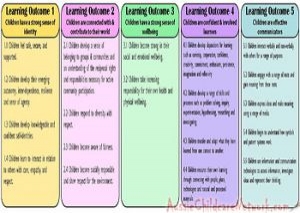 Here is the list of the EYLF Learning Outcomes that you can use as a guide or reference for your documentation and planning. The EYLF
Here is the list of the EYLF Learning Outcomes that you can use as a guide or reference for your documentation and planning. The EYLF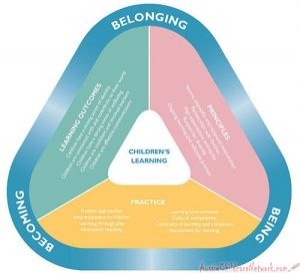 The EYLF is a guide which consists of Principles, Practices and 5 main Learning Outcomes along with each of their sub outcomes, based on identity,
The EYLF is a guide which consists of Principles, Practices and 5 main Learning Outcomes along with each of their sub outcomes, based on identity, This is a guide on How to Write a Learning Story. It provides information on What Is A Learning Story, Writing A Learning Story, Sample
This is a guide on How to Write a Learning Story. It provides information on What Is A Learning Story, Writing A Learning Story, Sample One of the most important types of documentation methods that educators needs to be familiar with are “observations”. Observations are crucial for all early childhood
One of the most important types of documentation methods that educators needs to be familiar with are “observations”. Observations are crucial for all early childhood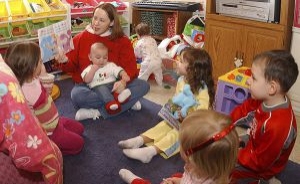 To support children achieve learning outcomes from the EYLF Framework, the following list gives educators examples of how to promote children's learning in each individual
To support children achieve learning outcomes from the EYLF Framework, the following list gives educators examples of how to promote children's learning in each individual Reflective practice is learning from everyday situations and issues and concerns that arise which form part of our daily routine while working in an early
Reflective practice is learning from everyday situations and issues and concerns that arise which form part of our daily routine while working in an early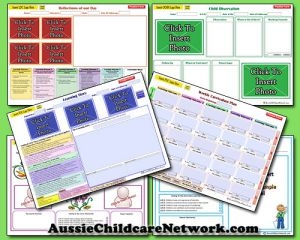 Within Australia, Programming and Planning is reflected and supported by the Early Years Learning Framework. Educators within early childhood settings, use the EYLF to guide
Within Australia, Programming and Planning is reflected and supported by the Early Years Learning Framework. Educators within early childhood settings, use the EYLF to guide When observing children, it's important that we use a range of different observation methods from running records, learning stories to photographs and work samples. Using
When observing children, it's important that we use a range of different observation methods from running records, learning stories to photographs and work samples. Using This is a guide for educators on what to observe under each sub learning outcome from the EYLF Framework, when a child is engaged in
This is a guide for educators on what to observe under each sub learning outcome from the EYLF Framework, when a child is engaged in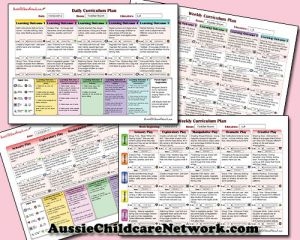 The Early Years Learning Framework describes the curriculum as “all the interactions, experiences, activities, routines and events, planned and unplanned, that occur in an environment
The Early Years Learning Framework describes the curriculum as “all the interactions, experiences, activities, routines and events, planned and unplanned, that occur in an environment
